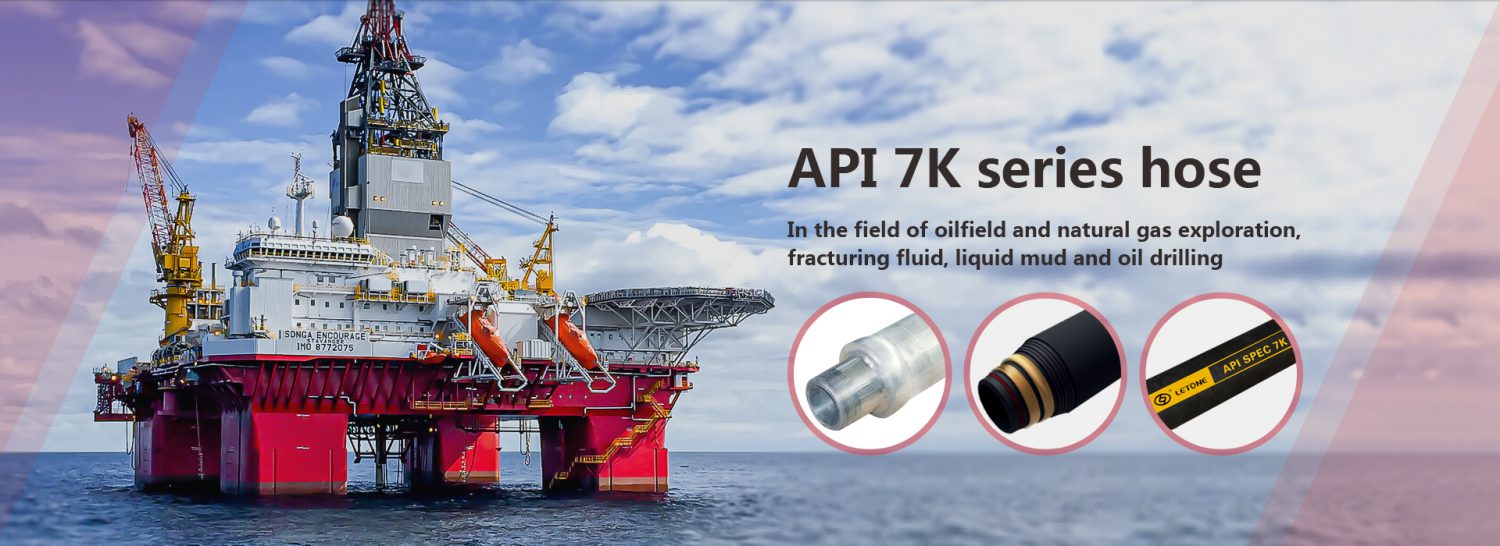In the process of oil exploration and production, the pipeline system for transporting drilling fluid and oil and gas is very important. In this process, the application of API 16C oil drilling hose provides a guarantee for safe and efficient operation. This article will focus on the three aspects of API 16C oil drilling hose, high pressure well kill hose, conduit hose and oilfield hose to gain an in-depth understanding of its key technologies and applications. Key technology of API 16C oil drilling hoseAPI 16C Oil Drilling Hose is a delivery pipeline specially designed for oil drilling. According to the…
In the process of oil exploration and production, the pipeline system for transporting drilling fluid and oil and gas is very important. In this process, the application of API 16C oil drilling hose provides a guarantee for safe and efficient operation. This article will focus on the three aspects of API 16C oil drilling hose, high pressure well kill hose, conduit hose and oilfield hose to gain an in-depth understanding of its key technologies and applications.
- Key technology of API 16C oil drilling hose
API 16C Oil Drilling Hose is a delivery pipeline specially designed for oil drilling. According to the standards of the American Petroleum Institute (API), this type of hose has the characteristics of high strength, high pressure resistance, corrosion resistance, etc., and can operate normally in extreme environments. The key technologies of API 16C petroleum drilling hose mainly include: - Material selection: The hose is made of high-strength, wear-resistant, corrosion-resistant synthetic rubber and steel wire materials, which have good anti-aging performance.
- Structural design: There is a steel wire spiral reinforcement layer between the inner and outer layers of the hose, which can improve the pressure bearing capacity and tensile strength of the hose.
- Joint design: It is made of high-quality steel, which can withstand high-pressure loads and has good sealing performance.
- Application and advantages of high pressure well kill hose conduit hose
High-pressure kill hose Conduit hose is responsible for transporting high-pressure drilling fluid during oil drilling, and is mainly used in fracturing operations, hydraulic punching and other operations. Its main advantages are as follows: - Cost saving: Compared with traditional metal pipes, high-pressure kill hoses have lower costs and reduce the investment burden.
- Flexibility: The hose has good bending performance and can cope with complex terrain and underground pipeline layout.
- Wear-resistant: The high-pressure kill hose is made of wear-resistant materials, which effectively reduces the risk of wear and leakage.
- Easy maintenance: the hose is easier to install, disassemble and maintain, which reduces operating costs and maintenance difficulties.
- The importance and application scenarios of oilfield hoses
Oilfield hose is an indispensable key equipment in the process of oil and gas exploitation. It is widely used in multiple scenarios such as oil drilling, oil and gas transportation, and hydraulic fracturing. The following is a brief introduction of its application scenarios: - Oil drilling: Oil field hoses are used to transport high-pressure drilling fluid, provide cooling and lubrication for drill bits, and take away cuttings at the same time.
- Oil and gas transportation: Oilfield hoses are responsible for transporting crude oil and natural gas from the wellhead to production equipment during the production process of oil and gas wells.
- Hydraulic fracturing: In the process of hydraulic fracturing, the high-pressure kill hose transports fracturing fluid to the target layer to realize the cracking of oil and gas reservoirs.
- Oil extraction operations: Oilfield hoses are responsible for transporting various liquids, such as water injection and preservatives, during oilfield water injection and oil extraction operations.
To sum up, API 16C Oil Drilling Hose, High Pressure Kill Hose Conduit Hose and Oilfield Hose play a key role in the process of oil exploration and production. Their application not only improves operating efficiency and reduces operating costs, but also effectively reduces the risk of environmental pollution. Therefore, in the future development of the petroleum industry, these hose technologies will continue to receive widespread attention and application.


